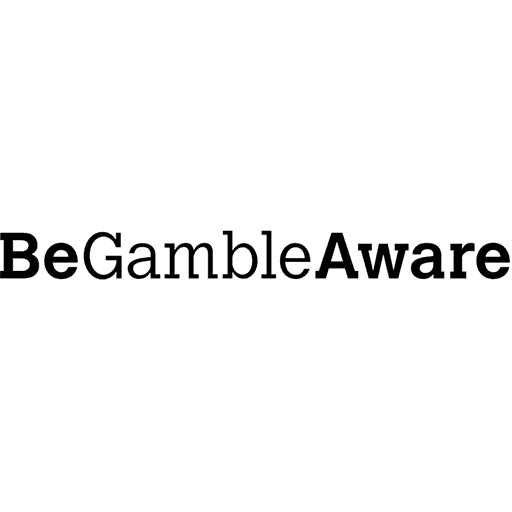If you’re gearing up for the 2025 Kentucky Derby, you might be wondering how to navigate the world of betting on this iconic race. With so many options and factors to consider, it can be a bit overwhelming. But don’t worry! This guide breaks down the basics of Kentucky Derby betting, key strategies, and tips to help you make informed decisions and hopefully cash in on the excitement of the race.
Key Takeaways
- Understand the different types of bets like win, place, and show.
- Keep track of horse performance and how jockeys and trainers influence outcomes.
- Weather conditions can significantly affect the race, so check forecasts ahead of time.
- Look for value bets and manage your bankroll wisely to maximize potential returns.
- Follow expert analysts and current trends for insights leading up to the race.
Understanding Kentucky Derby Betting Basics
So, you want to get into betting on the Kentucky Derby? It can seem a little intimidating at first, but once you grasp the basics, it’s actually pretty straightforward. Let’s break down some essential stuff you need to know before placing your bets.
Types of Bets Available
There are a bunch of different ways to bet on the Kentucky Derby, but they mostly fall into two categories: straight bets and exotic bets. Straight bets are simpler and great for beginners. Exotic bets maximize returns, but they require a bit more knowledge and carry higher risk.
- Win: Your horse has to finish first.
- Place: Your horse needs to finish first or second.
- Show: Your horse needs to finish first, second, or third.
Exotic bets are where things get interesting. These involve predicting the order of finish for multiple horses, or even multiple races. Some common exotic bets include:
- Exacta: Pick the first and second-place finishers in the correct order.
- Trifecta: Pick the first, second, and third-place finishers in the correct order.
- Superfecta: Pick the first, second, third, and fourth-place finishers in the correct order.
- Daily Double: Pick the winners of two consecutive races.
- Pick 3/4/5/6: Pick the winners of multiple consecutive races. These can offer huge payouts, but they’re also incredibly difficult to win.
How to Read Odds
Understanding odds is super important. The odds tell you how likely a horse is to win, according to the betting public, and how much you’ll get paid if your horse wins. Odds are usually displayed in fractional form (e.g., 5-1, 10-1, 2-1). Here’s how to interpret them:
- 5-1: For every $1 you bet, you’ll win $5 (plus get your original $1 back) if your horse wins. So, a $2 bet would return $12 (2 x 5 + 2).
- 10-1: A $1 bet wins you $10 (plus your $1 back).
- 2-1: A $1 bet wins you $2 (plus your $1 back).
The lower the odds, the more likely the horse is to win (according to the odds makers). A horse with 2-1 odds is considered a bigger favorite than a horse with 10-1 odds.
Betting Terminology Explained
Horse racing has its own language. Here are a few common terms you’ll hear:
- Morning Line: The initial odds set by the track handicapper before betting begins.
- Post Time: The scheduled start time of the race.
- Furlong: A unit of distance equal to one-eighth of a mile.
- Handicapper: Someone who analyzes horse races and makes predictions.
- Pari-Mutuel Betting: A betting system where all the money bet on a race is pooled, and the payout odds are calculated by sharing the pool among the winning bettors after a deduction of the track’s commission. This means the odds can change right up until post time, depending on how people are betting. It’s good to keep an eye on Kentucky Derby picks before placing your bets.
Understanding these basics is the first step to enjoying the Kentucky Derby and maybe even winning some money. Don’t be afraid to start small and learn as you go. Good luck!
Key Factors Influencing Race Outcomes
Horse Performance History
Looking at a horse’s past races is super important, but it’s not as simple as just picking the one with the most wins. You have to dig into the details. What kind of races were they? Were they against tough competition? How did the horse perform at different distances? Pay close attention to how a horse has performed in graded stakes races, as these are a good indicator of their ability to compete against top-level competition.
- Consider the horse’s speed figures from previous races. These numbers give you a standardized way to compare different horses’ performances.
- Look for consistency. A horse that consistently runs well is generally a safer bet than one that has one or two amazing races but is otherwise mediocre.
- Don’t just look at the wins. A horse that consistently finishes in the top three or four is still a strong contender, even if they haven’t won a lot of races.
It’s also important to remember that three-year-olds are still developing. A horse that was good last year might not be as good this year, and vice versa. So, you need to focus on their recent form, not just their overall record.
Jockey and Trainer Impact
The jockey and trainer can have a huge impact on a horse’s performance. A good jockey can make all the difference in a close race, and a good trainer can get a horse into peak condition for the Derby. It’s important to consider their experience and their past success in the Kentucky Derby. For example, a jockey with a history of Kentucky Derby wins might be a better choice than one who is new to the race.
- Check the jockey’s win percentage. A jockey with a high win percentage is generally a good choice.
- Look at the trainer’s record in the Kentucky Derby. Some trainers just seem to have a knack for getting their horses ready for this race.
- Consider the relationship between the jockey and the horse. Some jockeys and horses just seem to click, and that can make a big difference.
Track Conditions and Weather
The track conditions and weather can also play a big role in the outcome of the race. A muddy track can favor some horses and hinder others. Similarly, hot weather can tire out some horses more quickly. It’s important to consider these factors when making your bets. Some horses excel in adverse weather conditions, while others struggle.
- Pay attention to the weather forecast in the days leading up to the race. This will give you an idea of what the track conditions are likely to be.
- Look at how the horses have performed on different track conditions in the past. Some horses are mud-runners, while others prefer a fast track.
- Consider the impact of the weather on the crowd. A hot, sunny day can make the crowd more rowdy, which can affect the horses’ behavior.
Here’s a simple table showing how different track conditions might affect different running styles:
| Running Style | Fast Track | Muddy Track | Soft Turf |
|---|---|---|---|
| Frontrunner | Good | Okay | Poor |
| Stalker | Good | Good | Okay |
| Closer | Okay | Good | Good |
Analyzing Contenders for 2025
Top Horses to Watch
Okay, so who are we keeping an eye on for the 2025 Derby? It’s still early, but a few names are already generating buzz. Citizen Bull is definitely one to watch; early speed and stamina make him a threat. Neoequos is another one, showing real promise in recent workouts. Don’t sleep on some of the other horses either, like Final Gambit and Rodriguez. They might not be the top favorites right now, but they’ve got potential to surprise.
Recent Form and Performance
Looking at recent races is key. You can’t just go by reputation. How have these horses been performing lately? Are they improving, or have they plateaued? For example, Citizen Bull had a great showing at the Lexington Stakes, but Neoequos struggled a bit in the Blue Grass Stakes. It’s all about momentum. A horse that’s consistently finishing strong is a better bet than one that had one lucky win months ago. Let’s take a look at some recent performances:
| Horse Name | Last Race | Finish Position |
|---|---|---|
| Citizen Bull | Lexington Stakes | 1st |
| Neoequos | Blue Grass Stakes | 4th |
| Final Gambit | Wood Memorial | 2nd |
| Rodriguez | Santa Anita Derby | 3rd |
| American Promise | Florida Derby | 8th |
Pedigree and Breeding Insights
Pedigree matters. A lot. Some people think it’s overrated, but I disagree. A horse’s bloodline can tell you a lot about its potential. Does it come from a line of stayers, horses that can handle the distance? Or is it bred for speed? For example, if a horse’s sire and dam were both successful at longer distances, that’s a good sign it can handle the Kentucky Derby distance. On the other hand, a horse bred for sprints might fade in the final stretch.
Understanding a horse’s pedigree is like reading its resume. It gives you insights into its potential strengths and weaknesses. It’s not a guarantee of success, but it’s definitely a factor to consider when placing your bets.
Here are some things to consider:
- Sire’s influence on stamina
- Dam’s racing record
- Notable ancestors and their achievements
Effective Betting Strategies for Success
Bankroll Management Tips
Okay, so you wanna bet on the Derby? Cool. First things first, don’t be an idiot with your money. Seriously. Set a budget and stick to it. It’s way too easy to get caught up in the excitement and start throwing cash around like you’re Scrooge McDuck. Don’t do it. Figure out how much you’re willing to lose before you even look at the 2025 betting odds. Then, divide that amount into smaller bets. Think of it like this: it’s a marathon, not a sprint. You want to last the whole race, not blow your wad in the first furlong.
- Never bet more than you can afford to lose.
- Keep track of your wins and losses. It’s depressing, but important.
- Avoid chasing losses. It’s a recipe for disaster.
Seriously, bankroll management isn’t sexy, but it’s what separates the folks who have fun from the folks who end up eating ramen for a month. Treat it like a job, not a game.
Using Exotics to Maximize Returns
Alright, so you’re not just betting to win, you’re betting to win big. That’s where exotics come in. These are the bets that can turn a small investment into a serious payday. We’re talking Exactas (picking the first two finishers in order), Trifectas (first three), and Superfectas (first four). The catch? They’re hard to hit. Really hard. But the payouts can be huge. Think of it like buying a lottery ticket, but with slightly better odds if you know your stuff. A [straight trifecta] is a good example of an exotic bet.
- Do your homework. Know the horses, the jockeys, and the track.
- Consider keying a horse. This means picking one horse to win and then boxing the others for the remaining spots.
- Don’t be afraid to play smaller amounts. Even a $0.10 Superfecta can pay out big.
Identifying Value Bets
Value bets are where the real money is made. These are the horses that are being underestimated by the public, meaning their odds are higher than they should be. Finding these gems requires a bit of detective work. Look for horses with good recent form, solid speed figures, and favorable track conditions. Maybe a horse had a bad race last time out but had a legitimate excuse (bad post position, troubled trip, etc.). These are the horses that the casual bettors will overlook, but the smart ones will pounce on. Keep an eye on the [Kentucky Derby picks] from the experts.
- Compare odds across different betting platforms.
- Look for horses with improving form.
- Consider horses that are well-suited to the distance.
Here’s a simple table to illustrate how odds translate to implied probability:
| Odds | Implied Probability | Example Payout (on a $2 bet) |
|---|---|---|
| 2-1 | 33.3% | $6 |
| 5-1 | 16.7% | $12 |
| 10-1 | 9.1% | $22 |
Navigating Online Betting Platforms
Okay, so you’re ready to put some money down on the Kentucky Derby. Awesome! But before you do, let’s talk about where you’re actually placing those bets. Online betting is super convenient, but it’s not all created equal. You gotta pick the right platform and know how to use it safely.
Choosing the Right Betting Site
There are a ton of options out there, from big names to smaller, lesser-known sites. How do you pick? Well, first, make sure they’re actually legal in your state! That’s the most important thing. Then, think about what you want in a betting site. Do they offer the types of bets you’re interested in? Is the interface easy to use? What about customer service? Read reviews, check out different sites, and see which one feels right for you. Some people really like FanDuel Racing because it’s so user-friendly.
Here’s a quick checklist:
- Legality: Are they licensed in your state?
- Bet Types: Do they offer win, place, show, exotics, etc.?
- User Interface: Is the site easy to navigate on both desktop and mobile?
- Customer Support: How responsive and helpful is their support team?
- Reputation: What are other bettors saying about them?
Understanding Promotions and Bonuses
Almost every online betting site offers some kind of promotion or bonus to attract new customers. This could be a deposit match, a risk-free bet, or something else entirely. These can be great, but always read the fine print! There are usually wagering requirements you have to meet before you can withdraw any winnings. Don’t just jump at the biggest bonus without understanding the terms. For example, TwinSpires Sportsbook often has bonus offers, but make sure you know the details.
Placing Bets Safely and Securely
Okay, you’ve picked a site and you’re ready to bet. Great! But before you do, let’s talk about security. Make sure the site uses encryption to protect your personal and financial information. Look for "https" in the website address and a padlock icon in your browser. Use a strong password and don’t share it with anyone. Also, be aware of the risks of problem gambling. Set a budget and stick to it. If you think you might have a problem, seek help. Responsible gambling is key to enjoying the Kentucky Derby betting experience.
It’s easy to get caught up in the excitement of betting, but it’s important to remember that it’s just a game. Don’t bet more than you can afford to lose, and don’t let it take over your life. There are resources available if you need help with problem gambling. Remember to have fun and enjoy the race!
Expert Insights and Predictions

Top Analysts to Follow
Figuring out who to listen to when it comes to the Kentucky Derby can be tough. There are so many voices out there, all claiming to have the inside scoop. I’ve found it helpful to focus on analysts with a proven track record. Look for those who consistently provide well-reasoned arguments, not just gut feelings. Someone who digs into the data, understands horse performance history, and isn’t afraid to go against the grain.
Latest Betting Trends
Betting trends can offer some clues, but it’s important not to rely on them too heavily. Just because a certain post position has historically produced winners doesn’t guarantee it will happen again. However, keeping an eye on where the money is going can be useful. Are people suddenly piling on a particular horse? Is there a lot of action on exotic bets like the trifecta or superfecta? This information can help you gauge public sentiment and potentially identify value bets that others are overlooking. Here are some recent trends:
- Increased interest in international horses.
- More money being placed on longshots.
- A shift towards mobile betting platforms.
Pre-Race Predictions and Analysis
Okay, let’s talk predictions. It’s May 3rd, 2025, and the Derby is right around the corner. Based on what I’m seeing, there are a few horses that stand out. Horse A has been consistently strong in recent races, while Horse B boasts an impressive pedigree. However, Horse C is a bit of a wild card – showing flashes of brilliance but also prone to inconsistency. Ultimately, the Derby is unpredictable, but here’s my take:
Don’t get too caught up in the hype. The Kentucky Derby is famous for upsets. Focus on finding horses with a good combination of speed, stamina, and tactical flexibility. And remember, a little bit of luck never hurts.
Here’s a quick look at potential contenders:
| Horse | Recent Form | Pedigree | Odds (Estimate) |
|---|---|---|---|
| Horse A | Strong | Solid | 5-1 |
| Horse B | Good | Excellent | 8-1 |
| Horse C | Inconsistent | Promising | 15-1 |
| Horse D | Steady | Average | 20-1 |
Post-Race Analysis and Learning

Reviewing Your Bets
Okay, the Derby’s done, the roses have been handed out, and hopefully, you had some fun. Now comes the not-always-fun part: figuring out what went right and what went wrong. Did your Kentucky Derby betting strategy pay off, or did you end up throwing money at a long shot that never had a chance? Take a hard look at each bet you made. Don’t just focus on the winners; the losers are where the real lessons are hidden.
- List out each bet: type, horse, amount, and outcome.
- Note the odds for each bet.
- Calculate your overall profit or loss.
Learning from Mistakes
Everyone makes mistakes when betting, even the pros. The key is to not repeat them. Did you let emotion cloud your judgment? Did you ignore a key piece of information, like track conditions? Maybe you chased losses, which is a classic no-no. Write down what you think went wrong and be honest with yourself. It’s easy to blame luck, but usually, there’s something you could have done differently.
It’s tempting to just forget about the bad bets and celebrate the wins, but that’s a recipe for repeating the same errors. Take the time to really understand why a bet failed. Was it a bad read on the horse, the jockey, or the pace of the race? The more you analyze, the better you’ll get.
Adjusting Strategies for Future Races
So, you’ve reviewed your bets and identified your mistakes. Now what? Time to tweak your approach. Maybe you need to focus more on speed figures, or perhaps you should pay closer attention to trainer stats. The goal is to develop a system that works for you, and that means constantly refining it based on your experiences. Consider these adjustments:
- Refine your handicapping process.
- Adjust your bankroll management strategy.
- Explore different types of bets.
Here’s a simple table to help track your progress:
| Race | Strategy Used | Outcome | Lessons Learned |
|---|---|---|---|
| Kentucky Derby | [Strategy A] | Loss | Need to consider track conditions more carefully |
| Preakness | [Strategy B] | Win | Sticking to the plan paid off |
Wrapping It Up
Betting on the Kentucky Derby can be a wild ride, but it doesn’t have to be overwhelming. With 20 horses in the mix and a lot of factors to consider, it’s all about finding what works for you. Keep an eye on the weather, understand the different racing styles, and don’t forget to check the odds. It’s not just about picking a favorite; it’s about making smart choices based on the information you have. So, as you gear up for the 2025 race, remember to enjoy the process. Whether you win or lose, the excitement of the Derby is what makes it special.
Frequently Asked Questions
What types of bets can I place on the Kentucky Derby?
You can place different types of bets like win, place, show, exacta, trifecta, and superfecta.
How do I understand the odds for each horse?
Odds show how much money you can win based on your bet. For example, if a horse has odds of 5-1, you win $5 for every $1 you bet if that horse wins.
What should I look for when choosing a horse to bet on?
Check the horse’s past performance, the jockey’s experience, and the track conditions on race day.
What is bankroll management in betting?
Bankroll management means deciding how much money you will bet and making sure you don’t spend more than you can afford to lose.
How can I safely place bets online?
Choose a reputable betting site, check for security features, and read the site’s rules before placing your bets.
Where can I find expert predictions for the Kentucky Derby?
Look for sports analysts and betting websites that provide insights and predictions on the race.











